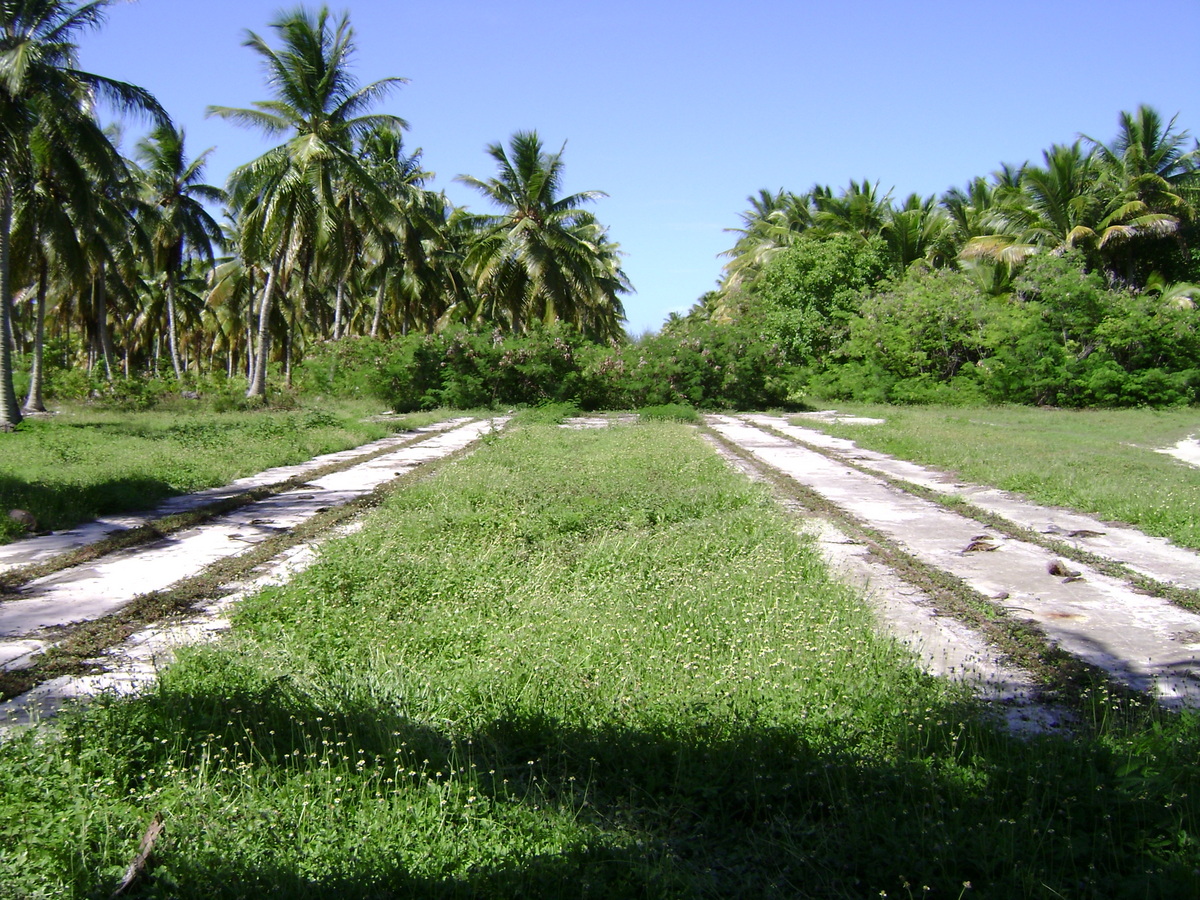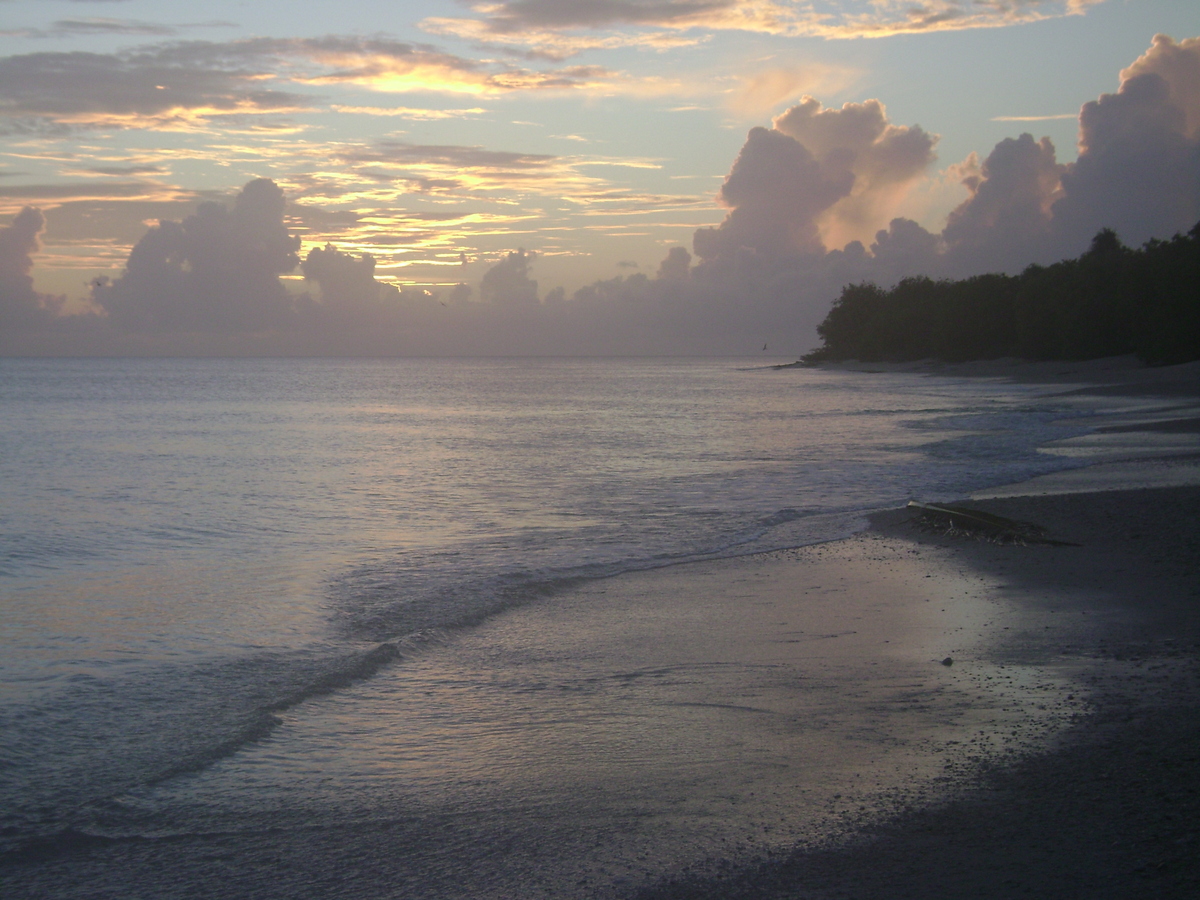The Green Planet Monitor

Day of Two Suns
This past Friday, March 1, marked the 70th anniversary of the Bravo Shot, the first in a series of high-yield US thermonuclear tests in the Marshall Islands, just north of the equator, in the central Pacific.
The Pentagon carried out 67 nuclear tests in the Marshalls — 44 at Eniwetok Atoll, in the northern end of the chain, and 23 at Bikini Atoll.
Castle Bravo was the biggest, and a big experiment: a fission-fusion device fueled by lithium-deuteride, designed by the Hungarian and Polish nuclear physicists Edward Teller and Stanisław Ulam.
Bravo exceeded expectations. Rated at 6 megatons, it yielded fifteen. Thrilling news for nuclear scientists and the American military.
Bad news for the Marshallese people. Just north of Bikini, fallout rained down on the people of Rongelap and Utirik Atolls. Finer particulate fallout drifted up and down the Marshalls, and, through Earth’s stratosphere, all around the planet.
I visited the Marshalls on the fiftieth anniversary of Bravo, back in 2004; then again in 2007. Here are some voices from those trips. In order of appearance: American anthropologist and nuclear researcher Holly Barker (reached in the US); Rongelap residents (on the Day of Two Suns) Elio Boaz (living in Salt Lake City at the time of this conversation), and Lamayo Abon; Canadian nuclear health activist Rosalie Bertell (now passed away); the former chair of the Nuclear Claims Tribunal (set up to adjudicate nuclear claims), Jim Plasman; the Tribunal’s Public Defender Bill Graham (now passed away), and Rongelap Senator Abacca Anjain-Maddison.
Listen to these folks in today’s podcast. Click on the play button above, or go here.

Old observation tower pad on Bikini Island (David Kattenburg)
The history of US nuclear weapons testing in the Marshalls Islands, its health, social and cultural impacts, and the drawn-out effort to get the US to pay full compensation are complicated.
Having secured the Marshalls as a UN ‘Trust Territory’, between 1946 and 1958, the US achieved nuclear superpower status for itself by testing 67 fission and fusion devices there — above, at the surface and within the waters of Bikini and Eniwetok Atolls (talk about trust and good faith).
Although US government and other independent studies had/have shown that all of the Marshalls were exposed to radioactive fallout in the course of its testing program, US government compensation has always been limited to the residents of just four Marshallese atolls, Rongelap and Utirik among them.
Under the terms of the first ‘Compact of Free Association’ agreement between the US and the Republic of the Marshall Islands (RMI), in 1983, the US provided $150 million to the RMI, in “full and final” compensation.
The RMI is one of three Pacific island states with Compacts of Free Association (the Federated States of Micronesia and Palau are the other two). In return for exclusive access to its territorial waters, and the right to use Kwajalein Atoll as a bullseye for ICBMs fired from California and Alaska, Washington provides the RMI with defense and economic assistance — and ample supplies of canned, boxed and other ultra-processed foods.
Diabetes and heart disease kill far more Marshallese than lingering radioisotopes.
Under Section 177 of the US-RMI Compact, in 1988, a Nuclear Claims Tribunal (NCT) was established. Its mission: to render “final determination [of] all claims past, present and future, of the Government, citizens and nationals of the Marshall Islands which are based on, arise out of, or are in any way related to the [American] Nuclear Testing Program.”
The NCT’s 150 million allocation was supposed to generate interest. Instead, it suffered a crushing loss in the 1987-88 Black Monday stock market crash. By the time it ceased functioning in 2011, the NCT had adjudicated over $2 billion in personal injury, property loss, and class-action claims.
Shortly prior to the NCT’s folding, the RMI submitted a “Changed Circumstances” petition to the US Congress, asking for additional funding to pay out adjudicated claims. The petition was rejected.

Under the 1990 Radiation Exposure Compensation Act (amended in 2023), US government funding is provided to ‘Downwinders’ — Americans who lived downwind from the Nevada Test Site (where numerous nuclear weapons were tested in the atmosphere) — as well as to US uranium miners and others working at nuclear sites, and to US service personnel who worked at nuclear sites.
Not to the Marshalls.
In January 2023, a new US-RMI Compact of Free Association was signed, allocating $2.3 billion to the Marshalls over 20 years (Israel receives about $4 billion every year), and $700 million for an RMI trust fund, associated with the RMI’s ‘Four-Atoll Program’.
On the 70th anniversary of the March 1, 1954 Bravo Shot, the GPM spoke with Giff Johnson, long-time resident of the Marshalls, and the editor of the Marshall Islands Journal.
Listen to our conversation in today’s podcast. Click on the play button above, or go here.

Sunset over Bikini Island (David Kattenburg)
I visited Bikini Island back in the course of a round-the-world trip in 2007.
Bikini Island lies across Bikini Atoll from the spot where Bravo lit up the morning sky, seventy years ago, excavating a huge hole, on that infamous Day of Two Suns.
Bikini’s leaders ran a dive operation at the time. For a considerable sum of money, tech-divers from around the world got to explore various mangled destroyers and aircraft carriers sent to the bottom of the atoll by US nuclear bombs. We ended up stranded on Bikini. Bikini Atoll Divers has since shut down.
Here’s a story from back then. Listen to it in today’s podcast. Click on the play button above, or go here.
Thanks to Dan Weisenberger for his wonderful guitar instrumentals.






 Visit Podcast Website
Visit Podcast Website RSS Podcast Feed
RSS Podcast Feed Subscribe
Subscribe
 Add to MyCast
Add to MyCast